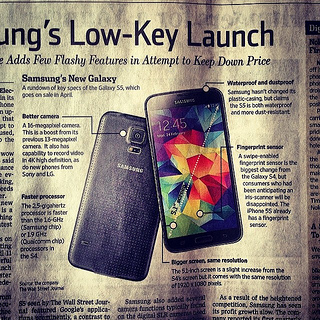Hats off to P&G. The overwhelmingly positive response to their tearjerker commercial targeting moms in the Sochi Olympics (“Pick Them Back Up”), was the latest example of the buzzworthy power of emotional branding and advertising. Almost 20 million people have viewed it so far online. This type of emotional advertising is pretty new for P&G–as Jim Stengel, former chief marketing officer at P&G pointed out, “there was not a whole lot of recognition of the emotional connection with a brand or company” until recent years.

Another example of how emotional advertising or “branded entertainment” can become viral appeared at the Oscars, when Ellen DeGeneres took a “selfie” of herself surrounded by stars with her Samsung smart phone. This spontaneous picture of happy faces was posted on her Twitter account and immediately broke all records for a re-tweet (over 3 million so far). This has generated enormous publicity for Samsung, which has just announced they are giving a dollar for each tweet to charity, an initiative that will surely appeal to younger Millennials who are particularly influenced by such positive emotions and “do good” contributions. This will definitely enhance the “brand trust” for Samsung, as well.
Marketing is essentially about influencing human behavior, ultimately a purchase decision. Traditional thinking has focused on the functional benefits of a brand and rational persuasive arguments to encourage such buying and to build loyalty. However in the past two decades, more and more evidence has been piling up to convince marketers that the emotional appeal of a brand will be far more effective for changing behavior:
- Daniel Kahneman, a psychologist who won the Nobel Prize in 2002, in his 2011 book Thinking, Fast and Slow stated that the brain has two systems: the intuitive “system one” which absorbs all emotions and makes decisions automatically, and “system two” which is more rational and calculating. Kahneman concludes that branding and advertising prize emotion over information.
- An article in the Economist (2/1/14) entitled “We want to be your friend,” points out that today the “holy grail for advertising is to make friends with the consumer…and advertisers are more interested in conveying chumminess”. Brand trust has become a major issue since the skepticism for advertising among Millennials, in particular, has declined so much (only 6% trust online advertising). Instead they rely more on “earned media” (i.e. word-of-mouth recommendations from friends) which they see as far more trustworthy.
- Neuroscientists agree that emotions are significantly more powerful than cognitive thinking for having an impact on behavior and decision making. For example, John Caine, a well known neuroscientist, said in 2000: “The essential difference between emotion and reason is that emotion leads to action while reason leads to conclusions.”
- Other neuroscientists refer to the Triune Brain Model, a theory developed by Paul MacLean in the 1960’s, which explains how the brain has evolved with three different sections. The unconscious mid brain, or Limbic system, is the primary seat for all emotions and determines most if not all decision making behavior.
- In his 2004 book, Lovemarks, Kevin Roberts said that “Lovemarks represents the next evolution of branding…and can reach the heart and gut, as well as the mind, creating intimate, emotional connections.”
To be successful going forward, marketers must re-examine their customers’ dispositions and desires to identify those pivotal emotions that will lead to a strong, positive bond with a brand. Perhaps the most compelling emotion is the sense of trust for a brand, which is a function of many other critical emotions – e.g. integrity, credibility, authenticity, reliability, etc. Importantly, there are more effective ways today to diagnose customer mindsets for fresh insights, create new ideas for emotional marketing, and monitor efforts to strengthen brand trust and rejuvenate brands.




